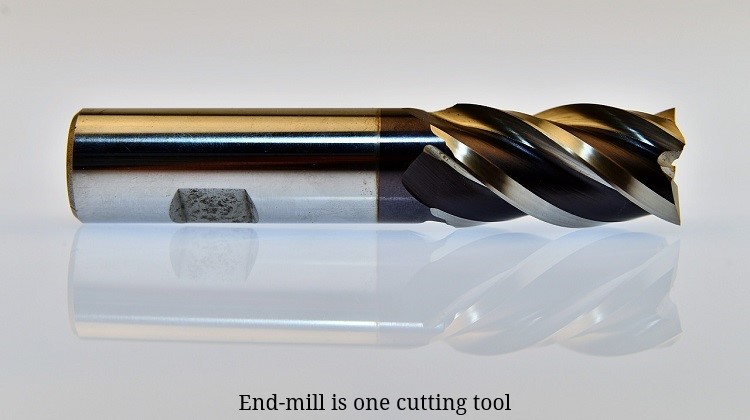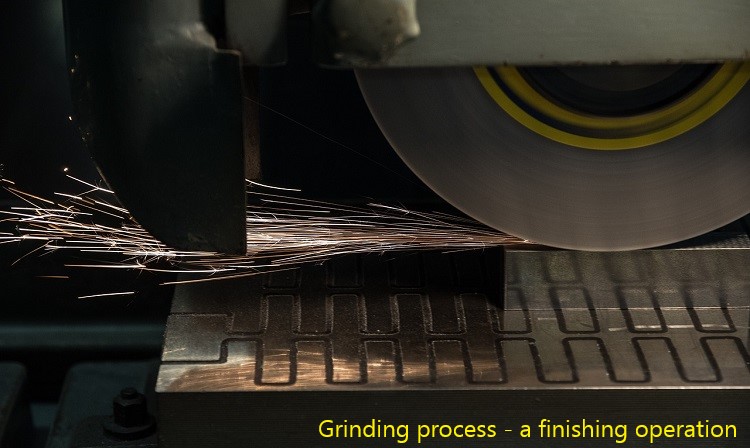Machining or metal cutting is one of the manufacturing processes by which excess material is gradually removed from a pre-formed blank to provide desired shape, size and finish. It is one subtractive manufacturing process that is primarily used to improve dimensional accuracy and tolerance level. To efficiently and economically process various materials in several ways, there exist various machining processes, each having different capability in terms of material removal rate (MRR), machining accuracy, feature size, feasible feature, feasible material, machining cost, etc. Such processes can be broadly classified into three groups—conventional machining, abrasive cutting and non-traditional machining (NTM) processes.

Conventional machining processes utilizes a wedge shaped cutting tool (or cutter) to gradually remove excess material from workpiece in the form of chips. Such processes include turning, threading, facing, drilling, tapping, boring, milling, shaping, planing, reaming, knurling, etc. Metallic cutter was prominent in early days; but now many non-metallic cutters are readily available. Function of a cutter is to compress a layer of material ahead of it and gradually shear it off to realize material removal. Usually the workpiece and cutter are rigidly mounted on the concerned machine tool and necessary relative velocities (speed, feed and depth of cut) are imparted on them to facilitate material removal. Every machining operation is carried out using a specific type of cutter; however, several features of a particular cutter may vary within certain limit. Cutters should have a defined geometry and material.
Abrasive cutting processes also perform similar task, that is removing material in the form of chips, but no metallic cutter is employed. Abrasive cutters are primarily made of refractory ceramic materials, mainly abrasives. These tiny sharp abrasives actually remove material from workpiece. Although such cutter as a whole has certain specifications, abrasives have random geometry. Typical examples of such processes include grinding, honing, lapping, etc. All these processes are suitable for finishing rather than bulk removal. Grinding utilizes a cylindrical wheel, called grinding wheel, made of abrasives as its cutting tool. Abrasive material, abrasive size, binding material, and other relevant parameters of grinding wheel are pre-defined; however, geometry of abrasives is not defined. Various differences between cutting tool and grinding wheel are given below in table format.
Table: Differences between cutting tool and grinding wheel
| Cutting Tool | Grinding Wheel |
|---|---|
| A cutting tool can be either single point or multi point. | Grinding wheel is always multi point cutting tool. |
| It can be made of metals, ceramics, diamond, or cBN. | Grinding wheel is composed of abrasives, which are bound in another medium like resin or metal. |
| Every cutting tool has well defined geometry. | Grinding wheel as a whole may have certain specification but abrasives have random geometry. |
Single point and multi-point cutter: A cutting tool may consists of one or more active cutting edges within the cutter body. A single point cutting tool is one that has only one main cutting edge to participate in material removal action at a time. If more than one cutting edge simultaneously participate in cutting action, then that cutter is termed as multi-point cutter. A single point cutter is cheaper and easy to fabricate but cannot take high chip load and thus process becomes less productive. Turning, shaping, planing, boring, fly cutting, etc. utilizes single point cutter; while, milling, drilling, reaming, broaching, hobbing, grinding, etc. employ multi-point cutter. Therefore, a cutting tool may be single point or multi-point; but grinding wheel is always multi-point cutter.

Material of cutters: A cutting tool can be made of various materials like carbon steel, high speed steel (HSS), tungsten carbide, ceramics, diamond, cubic boron nitride (cBN), etc. Different materials display varying capability and thus a compatible one is usually selected based on work material, machining process and other concerned parameters to achieve best performance. Grinding wheel is made of abrasives like alumina, silica and diamond. Such abrasive grits are bound in another soft or hard medium like resin, metal, etc. It is worth mentioning that material removal is realized by abrasive particles only; however, only few number of abrasives (about 1% among all that are exposed on periphery of wheel) participate in material shearing action in a pass.
Cutter geometry: Geometry, orientation and material are three important parameters that governs overall machining performance in every machining. Cutting tool should have a well-defined geometry; in fact, cutter is selected on the basis of such geometry. Geometrical features include rake angles, clearance angles, cutting angles, nose radius, etc. Grinding wheel usually has defined specification, but abrasives don’t have any specific geometry. Various tool angles are random and varies greatly among abrasives. Such random geometry sometimes affect machining performance (like increase in force or temperature).
Scientific comparison among cutting tool and grinding wheel is presented in this article. The author also suggests you to go through the following references for better understanding of the topic.
- Machining and Machine Tools by A. B. Chattopadhyay (1st edition, Wiley).
- Manufacturing Engineering and Technology: SI Edition by S. Kalpakjian and S. R. Schmid (7th edition, Pearson Ed Asia).

